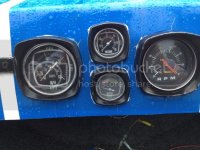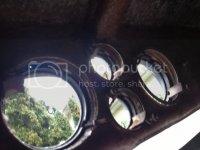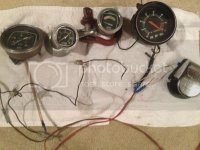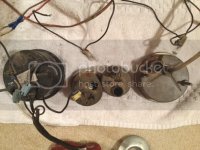starviper10
Active member
Today I pulled the gauges out. Is it normal that the bow light is hooked up to the panel lights for the gauges? Is that so when you turn the navigational lights on the panel lights turn on? Also, is the tachometer "stock"? It looks different from the others.


If you look closely, you can see that the tachometer is missing that thin circular ring that the mounting bolts should go through. I think this is why it was a little loose.






If you look closely, you can see that the tachometer is missing that thin circular ring that the mounting bolts should go through. I think this is why it was a little loose.






 I'm gonna need glasses soon reading your replys. Leave the font at atleast 10. Bigger is better
I'm gonna need glasses soon reading your replys. Leave the font at atleast 10. Bigger is better